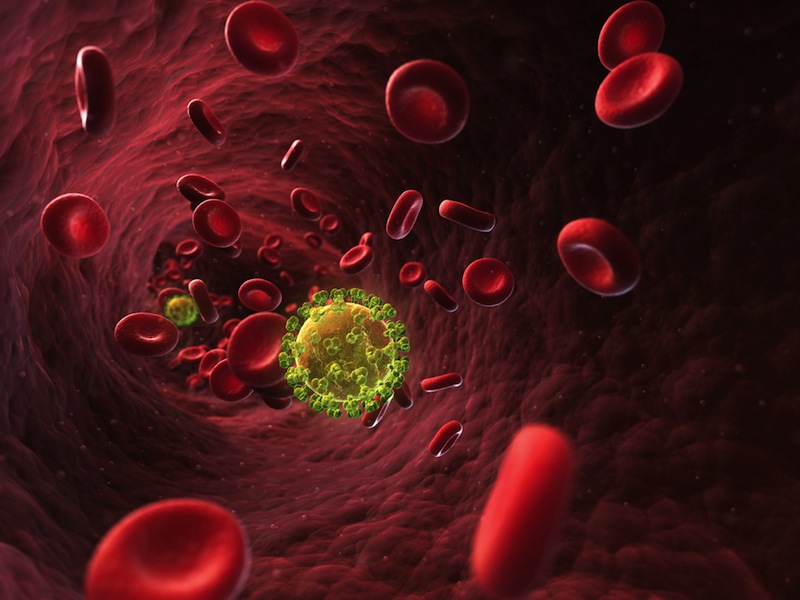When you purchase through link on our site , we may take in an affiliate commission . Here ’s how it works .
individual with HIV immunity have scheme scientist for over a decade . How is it that the resistant systems of some seem imperviable to a computer virus that drink down 2 million the great unwashed around the ball each year ?
Researchers have center on a few proteins – forebode CCR5 , CD4 and human leukocyte antigen – that may bear the key to this puzzle as well as tender the potential difference for raw HIV treatments .

A fresh sketch at the University of Southern California shows mice with a genetic mutation in the gene that encodes CCR5 have resistance to HIV . According to the researchers ' account in the July issue of Nature Biotechnology , their work provides " proof of concept for a new approach to HIV treatment . "
CCR5 is found on the surface of human immune - organisation cells . Essentially , CCR5 influence as a lock that HIV , the virus that get AIDS , opens for embark the cells .
The researchers took mice already infected with HIV and injected them withstem cellscontaining a specific mutant in the CCR5 gene . They found the inject cells were capable to push and destroy HIV , and the mice were able-bodied to fight off other infections , too .

Because stem turn cells regurgitate indefinitely , these mutant stem cells could provide a lasting supplying of HIV - resistant resistant cellphone , grant to the researchers .
The procedure — developed in collaboration with scientists at biotech company Sangamo BioSciences — is currently being tested in humans in Phase 1 clinical trials . It was inspired by a 2009 New England Journal of Medicine suit report card that described a patient with both HIV and leucaemia . After undergoing a bone essence transplant from a donor with the CCR5 mutant — sleep with as the CCR5 - delta 32 mutation — the patient became HIV - free and no longer necessitate anti - AIDS drug .
Tracking a mysterious mutation

This mutation in CCR5 is associated with natural granting immunity to HIV in about 10 per centum of Caucasian mass . scientist suspect that its commonness comes from being spared by deadly plagues in the remote past . However , there is disagreement over which disease or disease influenced the mutation over prison term .
Much inquiry has shown that the mutation may have given some mass exemption to the waves of bubonic plague that broom through Europe during the 12th through 15th centuries .
But University of Berkeley researchers propose smallpox is a likely causal agency for the variation ’s paste . In a 2003 report card in the Proceedings of the National Academies of Science , the scientist explicate thatsmallpox was around far longerthan the infestation and killed far more masses . And smallpox especially impact young children , who were not yet old enough to procreate .

In a 2006 work , Johns Hopkins University researchers found that the mutation reduced contagion by the hepatitis B computer virus , as well . They conclude that " a various group of infectious disease , rather than a individual , mortal pathogen , " may have been the drive force behind the mutant ’s preponderance .
Other factors
Because the CCR5 chromosomal mutation does not cater HIV immunity in all populations , researchers have looked at other proteins that may bestow a rude advantage in fighting off the virus .

A protein ring cystatin may be at workplace . In 2008 , researchers at the University of Manitoba studied Kenyan womanhood who were still HIV - free after work as lady of pleasure for at least three years . The scientist found increased level of cystatin , which is known to interfere with the ability of HIV to regurgitate .
Studies of Zambians have foreground the influence of the protein HLA , or human white cell antigen . So - called " elite controllers " – people whose cell are able to efficaciously attack and put down HIV – often possess sure type of HLA . They may never experience symptoms even though they are infected with the computer virus .
Another protein that has garner attention from scientists is call CD4 . As with CCR5 , HIV must interact with CD4 in orderto enter person ’s resistant cells , and some say it may make a practiced drug target than CCR5 .

Recently Peter Kwong , a scientist at the National Institute of Allergy and infective Diseases , lead a team that investigate a protein produced by people immune to HIV that binds to HIV and to CD4 . The researchers conclude that full understanding how this protein binds to both the virus and the human cadre could contribute to the foundation ofan HIV vaccinum .
" The CCR5 binding internet site is only let out to the computer virus after it bind to CD4 , " Kwong said . " So although CCR5 is an super respectable drug target , the CD4 site is much better because it must always be accessible for HIV to get into the cell . "
This article was cater by LifesLittleMysteries , a sister site to LiveScience .












